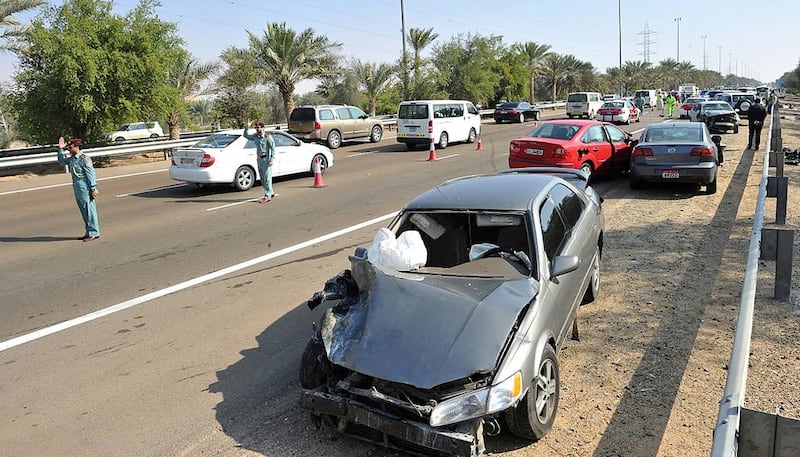ABU DHABI // Drivers should receive information about difficult weather conditions earlier, experts say.
“One technique is using electronic signage, providing advance fog warnings along with strictly enforced reduced speed limits, using active signs like those found in Europe and parts of the United States,” said Glenn Havinoviski, a transport specialist.
The 57-car pile-up on the Al Ain-Abu Dhabi motorway last week was caused by "low visibility and failure to observe a safe distance between vehicles on the road, as well as failure to reduce speed in changing weather conditions", police said.
Mr Havinoviski said: “Essentially, by keeping the speeds down in the first place through visible warnings and strict enforcement, even before you get to the hazardous area, you would avert the incident.
“But that doesn’t take away the responsibility from the drivers to be educated and think while they drive.”
Fawaz Moukayed, chief executive of Guardian Insurance Brokers, agreed.
“There should be warning signs on the highways to reduce the accidents,” Mr Moukayed said. “But if there is reduced visibility, why should you drive?
“You don’t speed just because you want to catch an appointment or meeting, or you would like to reach your office. Nobody is to blame but the drivers themselves.”
Al Ain Police traffic section discussed the causes and consequences of road accidents at a recent meeting.
As part of their safety procedures, coordination will be increased between the accident branch and radar units to instal more speed radars in accident hot spots.
A pile-up requires immediate response and backup from police, Civil Defence and ambulances, along with preparation for the arrival of victims at the nearest hospitals, said Mr Havinoviski.
“As part of this, the road needs to be closed to traffic so rescue vehicles have complete access to the roadway,” he said.
“Traffic needs to be detoured away from or around the incident. This requires appropriate temporary traffic control devices, including detour and alternate route signage.”
Fault has to be established by the investigators, usually with those drivers who were going too fast for conditions or who were driving aggressively.
“If there is fog or the road is wet, commuters should change their driving habits,” Mr Havinoviski said.
“Wet roads increase stopping distances, and fog reduces visibility ahead. Combining both exponentially increases the danger.”
rruiz@thenational.ae






